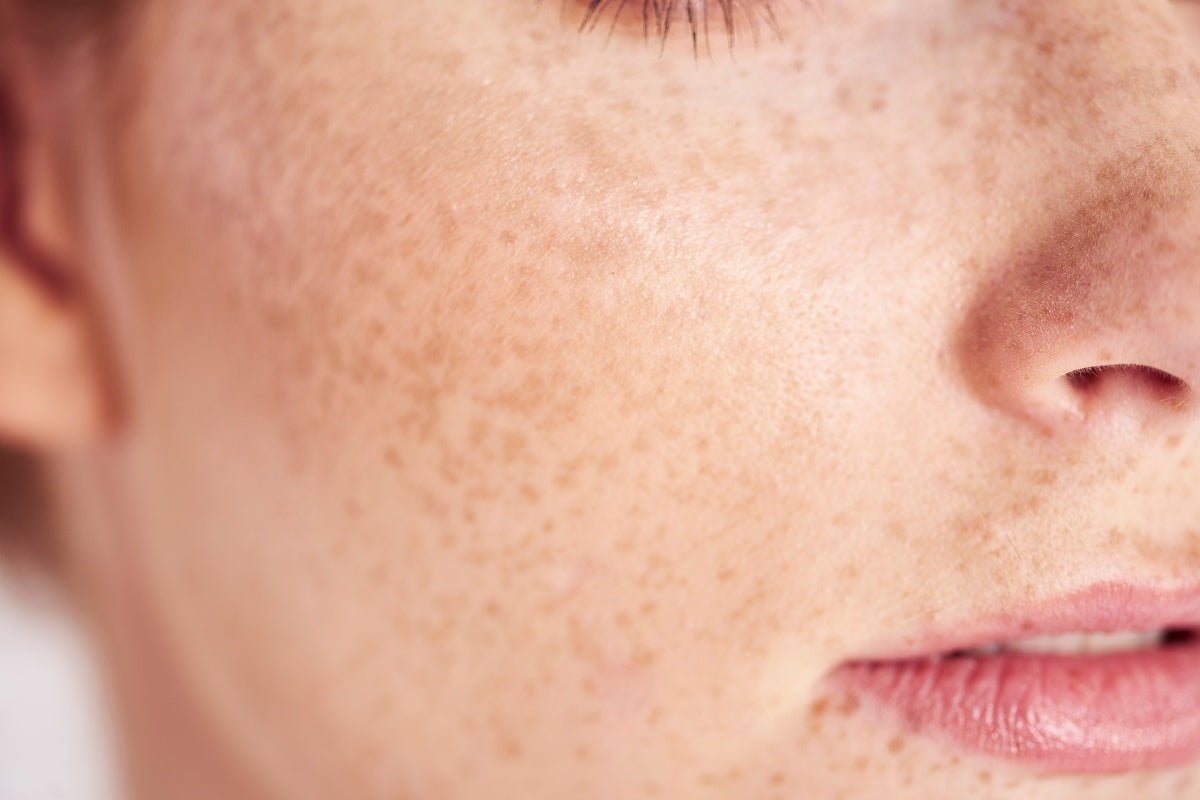Blog > All
How Long Does Red Light Therapy Take to Work?
Written by Our Editorial Team
6 min read
00
DAYS D00
HOURS H00
MINUTES M00
SECONDS S

With red light therapy taking the world by storm, we've been inundated with the same question: How long does it take for red light therapy to work?
Red light therapy has become a trusted tool in advanced skincare, supporting collagen renewal, evening tone, and calming inflammation. Yet the journey is gradual. Some benefits appear within days, while deeper changes unfold over weeks and months.
At Qure, we recommend approaching red light therapy as you would any evidence-based skincare regimen: with patience, consistency, and a focus on long-term skin health rather than instant fixes. Here's exactly what that looks like.
What this article covers:
Even after the first few sessions, some people notice subtle differences. Increased circulation and oxygen flow can leave the complexion with a temporary post-treatment glow.
Skin may feel warmer, softer, and slightly plumper. These changes are not structural yet, but they signal that cellular activity has been stimulated. This early response is often very motivating.
As one customer shared about using the Q-Rejuvalight Pro LED face mask: “After 2.5 weeks, I can tell a significant difference in my skin's moisture. Especially since it is the middle of winter. The discoloration on my forehead is also evening out, and the red, patchy spots on my cheeks are not as inflamed.”
This type of feedback underscores how short-term consistency can translate into visible improvements.

Red light therapy is used for a wide range of goals, from cosmetic skin rejuvenation to pain relief and wound recovery.
Because each process involves different biological pathways, timelines vary based on the use case:
These differences highlight why setting realistic expectations is crucial.
No two complexions respond in exactly the same way. In our experience, several variables determine how quickly results appear:
These factors explain why two people following the same schedule may see changes on different timelines. If you're curious to learn more about this topic, this guide on “How Does Infrared Light Work?” can be a great help.

To provide clarity, here is what you can anticipate when using a high-quality, FDA-cleared device like the Q-Rejuvalight Pro LED face mask consistently.
Some users notice a healthier glow, reduced puffiness, or calmer skin within days.
This is primarily due to increased circulation and temporary anti-inflammatory effects. While not dramatic, these early responses indicate that skin cells are responding to light exposure.
By the end of the third week, many report that redness is diminished and skin feels more hydrated. Mitochondrial energy production supports cell repair, and early collagen activity begins.
We've noticed that this is the point when motivation strengthens because changes become more tangible.
After one month of consistent use, improvements are often visible to others. Fine lines appear softer, texture feels smoother, and pigmentation may start to even out.
At this stage, fibroblasts are actively remodeling collagen, leading to structural changes in the dermis.
Over two to three months, results become more pronounced and lasting. Skin elasticity improves, pores look more refined, and overall radiance is stronger.
For those using red light therapy for acne or inflammatory concerns, breakouts often stabilize, and healing accelerates. This is also the timeframe when many transition from corrective treatments to maintenance sessions.

Red light therapy is not a one-time solution but a cumulative process.
We recommend setting a minimum commitment of six to eight weeks before evaluating results. This timeframe allows enough cycles of collagen remodeling and repair to make visible, measurable changes.
Patience is essential. Just as you would not expect a single workout to reshape your body, skin needs consistent exposure to light energy to strengthen and rebuild.
In our experience, clients who view red light therapy as an investment in long-term skin health report the highest satisfaction.
Pairing treatments with barrier-supportive skincare further enhances results. Hydration, antioxidants, and calming actives help optimize recovery between sessions.
Products such as the Qure hypochlorous spray and micro dart patches are designed to complement this process, delivering additional moisture and nutrients where they are needed most.
There's no one-size-fits-all answer to how long it takes for red light therapy to work.
However, the principles stay the same: you might see short-term changes within days, deeper rejuvenation takes weeks, and more significant improvements usually appear around two to three months.
At Qure, our science-first approach ensures every product is rigorously tested for safety and efficacy, including repeat insult patch testing with no adverse reactions.
Our FDA-cleared Q-Rejuvalight Pro LED face mask makes clinical-grade light therapy accessible at home, so you can achieve dermatologist-approved results with consistency and confidence.
Healthy, radiant skin is built over time. With patience, the right technology, and a focus on long-term skin resilience, red light therapy can become one of the most rewarding investments in your routine.
Get the science behind targeted skincare topics:
Most Popular Posts